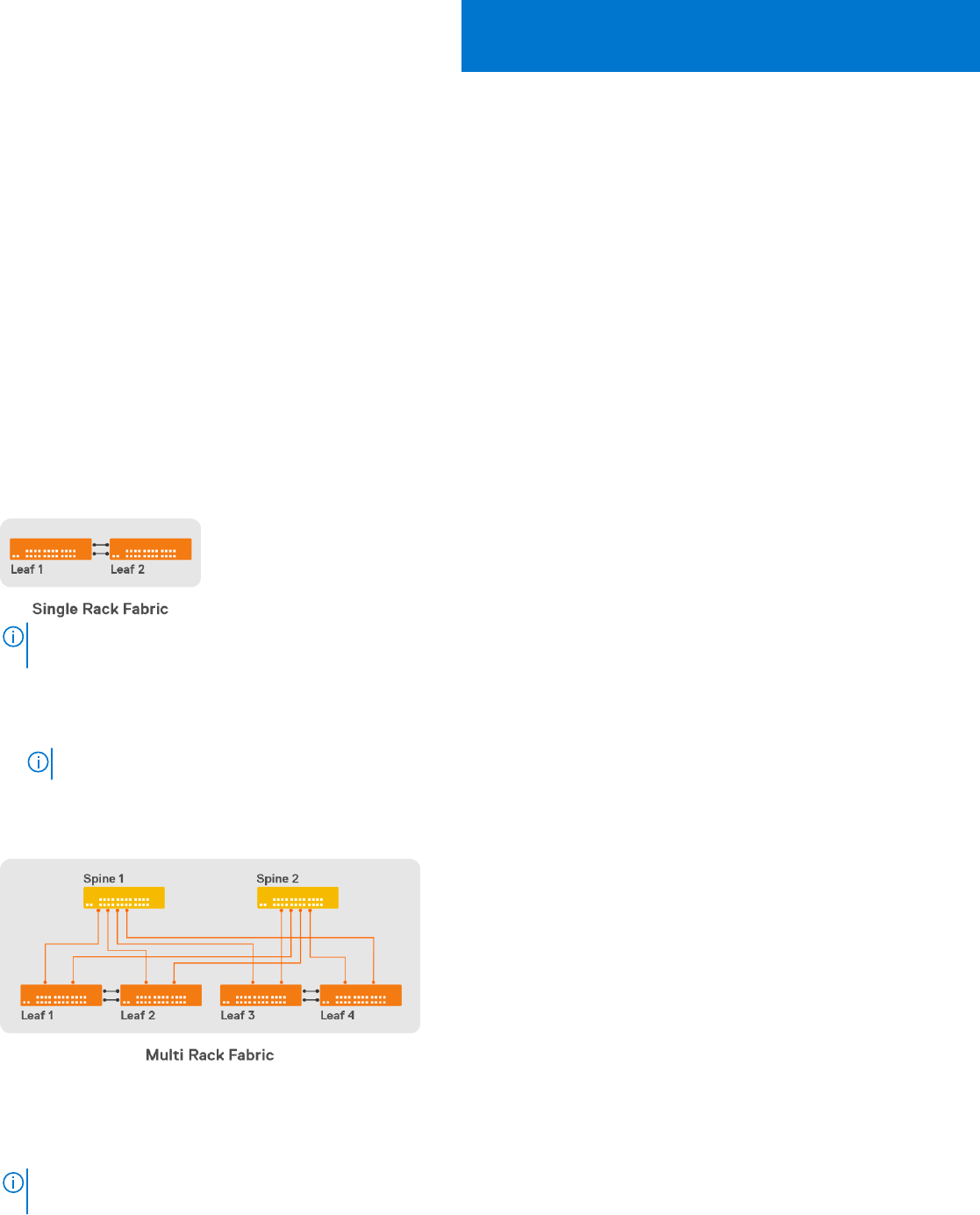Concept Guide
Table Of Contents
- Dell EMC SmartFabric Services User Guide Release 1.0
- About this guide
- SFS fundamentals
- Setting up SFS
- Deploying and managing a fabric
- Access fabric setup options
- Update default fabric, switch names, and descriptions
- Create uplink for external network connectivity
- Breakout switch ports
- Configure jump host
- Update network configuration
- Onboard a server onto the fabric
- Edit default fabric settings
- Restore fabric configuration
- Manage network profiles
- Manage routing profiles
- Access fabric setup options
- SFS with VxRail
- SFS with PowerEdge MX
- SFS for Isilon/PowerScale back-end fabric
- SFS commands
- smartfabric l3fabric enable
- smartfabric vlti
- show logging smartfabric
- show smartfabric cluster
- show smartfabric cluster member
- show smartfabric configured-server
- show smartfabric configured-server configured-server-interface
- show smartfabric details
- show smartfabric discovered-server
- show smartfabric discovered-server discovered-server-interface
- show smartfabric networks
- show smartfabric nodes
- show smartfabric personality
- show smartfabric uplinks
- show smartfabric upgrade-status
- show smartfabric validation-errors
- show switch-operating-mode
- Appendix

SFS fundamentals
This chapter provides information about the fundamentals of SFS including overview, supported topologies and platforms,
network fabric formation, and its supported solutions.
SFS overview
SFS is a SmartFabric OS10 feature that provides network fabric automation and API-based programming capabilities. SFS
has different personalities that can be integrated with systems including VxRail, PowerScale, generic PowerEdge servers,
PowerStore, storage, and MX servers. SFS integrated with these solution-specific deployments delivers autonomous fabric
deployment, expansion, and life cycle management.
SFS has two types: SFS for PowerEdge MX and SFS for leaf and spine. The following sections focus on concepts that are
related to SFS for leaf and spine:
SFS for leaf and spine is supported on S-series and Z-series Dell EMC PowerSwitches. See Supported platforms for a complete
list of supported platforms. SFS for leaf and spine has two personalities:
L2 single rack personality
NOTE:
This personality is not available for deployments after OS10.5.0.5 release. All single rack and multirack deployments
from 10.5.0.5 release and later uses the L3 personality.
SFS deployments on OS10 releases from 10.4.1.4 to OS10.5.0.5 support only L2 single rack.
● Provide fabric automation for a single pair of leaf switches.
● SFS deployment is limited to a single rack and cannot be expanded to a multirack deployment.
NOTE: When you upgrade switches with this personality enabled, they operate in the L2 single rack personality only.
● SFS L2 single rack personality is enabled by running a Python script in the OS10 Linux shell. See Enable L2 personality for
more information.
L3 multi rack personality
All SFS deployments using OS10.5.0.5 and later releases support SFS L3 personality and the capabilities are as follows:
● Provides fabric automation for leaf and spine.
● Allows SFS deployment in a single rack and expand to multirack as required.
● Allows you to enable SFS using CLI, API, or GUI.
NOTE:
In an MX-based deployment, the fabric is configured using OpenManage Enterprise-Modular (OME-M) UI, see Dell
EMC OpenManage Enterprise-Modular Editions User Guide available in PowerEdge MX Documentation.
See the Solutions Support Matrix for a complete list of solutions that can be onboarded onto the fabric.
2
SFS fundamentals 7










